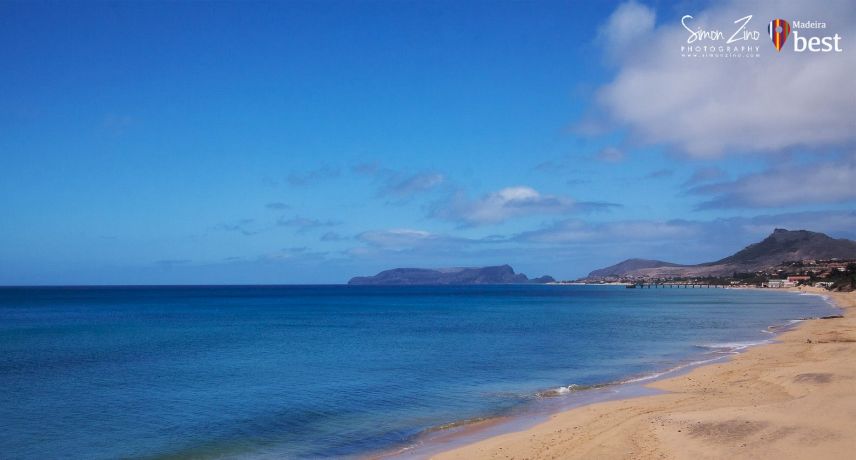
Porto Santo has an area of 42.48 kilometres. It is one of the six municipalities of Portugal to only have a single parish. It is often referred to as the Golden island by the islanders.
The Porto Santo Island was discovered in 1418 by João Gonçalves Zarco and Tristão Vaz Teixeira, a year before Madeira Island.
According to legend, Christopher Columbus inhabited this island, having married one of the daughters of his first captain, Bartolomeu Perestrelo.
Because of the successive pirate attacks from Barbary and others on the island, among which the attack in 1619 stands out, most of the population was either enslaved or died off, leaving only 18 men and 7 women. Philip III of Spain sought to repopulate the island, ordering the construction of a fort to protect it's people.
According to the Madeiran Elucidário, the governor of Porto Santo, Martim Mendes de Vasconcelos, was strongly interested in the recovery and maintenance of the island.
The Captaincy of Porto Santo was abolished in 1770.
The county was created in 1835 and the seat of the municipality is the city of Vila Baleira.
Even though the island only has a single parish, the locals refer to areas as the most predominant spot, as is the case of Ponta da Calheta, which has an incredible view and stands at one of the ends of Porto Santo.
Porto Santo is also the birth place of the Bolo do Caco, a traditional madeiran bread that's cooked not in an oven but on a hot surface in the open. The story goes that this was due to the fact that in olden days, people were forbidden to have ovens and as a way of getting by, the locals devised a way to cook bread that did not require one. These can be cooked plain or with chorizo.
As for what to see and what to do, there are a few interesting things.
There are two short walks. One on the Northeast side of the island, PR1 - Vereda Pico Branco & Terra Chã, where you get to see the terraces of old and some fantastic views overlooking the East side of Porto Santo and, PR2 - Vereda do Pico do Castelo, in which you will pass by the highest point on the Island giving you a privileged view of the whole island.
If golfing is your preferred activity, they have that too! There's a 27-hole golf club called Porto Santo Golfe that was designed by 5-time major winner Steve Ballesteros and is located close to Caniço de Baixo on the west side of the island.
As for the history buffs, there are some museums around Porto Santo that might pique your interest. The Christopher Columbus House, is a museum of the house the famous navigator used to live in. It's located on the Northwest side near the coast. In it you can find sea exploration and colonial empire exhibits.
There is also the Museu Cardina. This particular museum includes the history of trade and agriculture from the island, there are also expertly crafted scale models of the tools used throughout the ages and the museum itself is built around a life-sized windmill that could be seen all around the island at the time they were constructed.
In a more religious setting, the island has many small chapels and churches which you can find all around, as is the case with the Chapel of the Holy Spirit, or Capela de Nossa Senhora da Graça.
Of course, the main attractions are the amazing yellow sand beaches which are rumoured to be some of the best in the world! Praia da Fontinha, and Praia do Penedo are probably the most visited ones on the Southern side of the island, however, many beaches like these surround Porto Santo, giving you a stunning and relaxing vacation.

